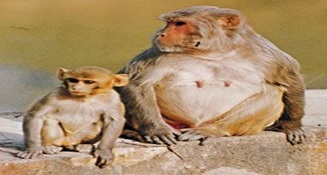10 November, 2025
Recommendation to Re-Include Rhesus Macaque in Schedule-II of the Wildlife Protection Act, 1972
Mon 10 Nov, 2025
Context:
The Standing Committee of the National Board for Wildlife (NBWL) has recommended re-including the Rhesus Macaque (Rhesus Monkey) under Schedule-II of the Wildlife (Protection) Act, 1972.
National Board for Wildlife (NBWL)
- Establishment: Formed in 2003 under Section 5A of the Wildlife (Protection) Act, 1972 (after the 2002 amendment).
- Nature: A Statutory Body.
- Role: Advises the Central Government on policies and measures for wildlife conservation and development in India. It replaced the Indian Board for Wildlife (IBWL), 1952.
- Total Members: Around 47.
- Chairperson: Prime Minister of India.
- Vice-Chairperson: Union Minister of Environment, Forest and Climate Change (MoEFCC).
Key Functions:
- Formulating India’s National Wildlife Policy.
- Issuing guidelines for the conservation of National Parks, Wildlife Sanctuaries and Protected Areas.
- Reviewing and evaluating wildlife conservation projects.
- Granting approval or recommendations for projects in Protected Areas.
- Protection of endangered species and their habitats.
Standing Committee of NBWL (SC-NBWL)
- It is a smaller executive body of NBWL formed under Section 5B of the Wildlife (Protection) Act, 1972.
Composition:
- Chairperson: Minister of Environment, Forest and Climate Change (MoEFCC).
- • Member Secretary: Director/Secretary (Wildlife Conservation), MoEFCC.
- • Other Members: Up to 10 members nominated from the NBWL.
Major Powers and Functions:
- Project Approvals: Reviews and approves development projects inside or around Protected Areas and Eco-sensitive Zones, such as dams, mining, roads, power transmission lines.
- Exercises powers delegated by NBWL to streamline decision-making.
- Assesses possible impact of projects on wildlife habitats.
- Ensures that no diversion or destruction of wildlife habitat in Protected Areas occurs unless deemed essential for wildlife improvement.
Rhesus Macaque (Rhesus Monkey)
- Scientific Name: Macaca mulatta
- Class: Mammalia
- Family: Cercopithecidae
- Genus: Macaca
- Appearance: Medium-sized monkey; brown to grey coat; pink hairless face; long flexible tail.
Habitat & Distribution:
- Among the most widely distributed non-human primates.
- Native to South, Central and Southeast Asia.
- Found in India, Nepal, Bangladesh, Pakistan, Myanmar, Thailand and Southern China.
Conservation Status:
- IUCN Red List: Least Concern
- (Because of large and widespread population distribution).
- CITES: Appendix II
(International trade is regulated, not fully banned, to prevent illegal capture and trade).
- India (Wildlife Protection Act, 1972): Earlier listed in Schedule-II, and is now recommended for re-inclusion to prevent cruelty and illegal/unregulated trade.
Wildlife (Protection) Act, 1972 (WPA 1972)
- Provides a comprehensive legal framework for the protection of wild animals, birds, and plants, and for regulating illegal hunting and trade.
- Objective: To safeguard wildlife and establish/manage National Parks and Wildlife Sanctuaries.
- Enforced Since: 9 September 1972.
- After the J&K Reorganization Act, 2019, it applies to all of India.
Constitutional Basis:
- Article 48A: Duty of the State to protect environment and wildlife.
- Article 51A(g): Fundamental duty of citizens to protect the natural environment.
- Aligns with CITES (Convention on International Trade in Endangered Species).
Schedules (After 2022 Amendment) :
| Schedule | Level of Protection | Description |
| Schedule I | Highest Protection | Critically endangered species (e.g., Tiger, Elephant, One-horned Rhino). |
| Schedule II | High Protection | Species needing strong protection; hunting prohibited. |
| Schedule III | Protected Plants | Prohibits uprooting, damaging, or destroying listed plant species. |
| Schedule IV | Species under CITES | International trade to be regulated. |


















